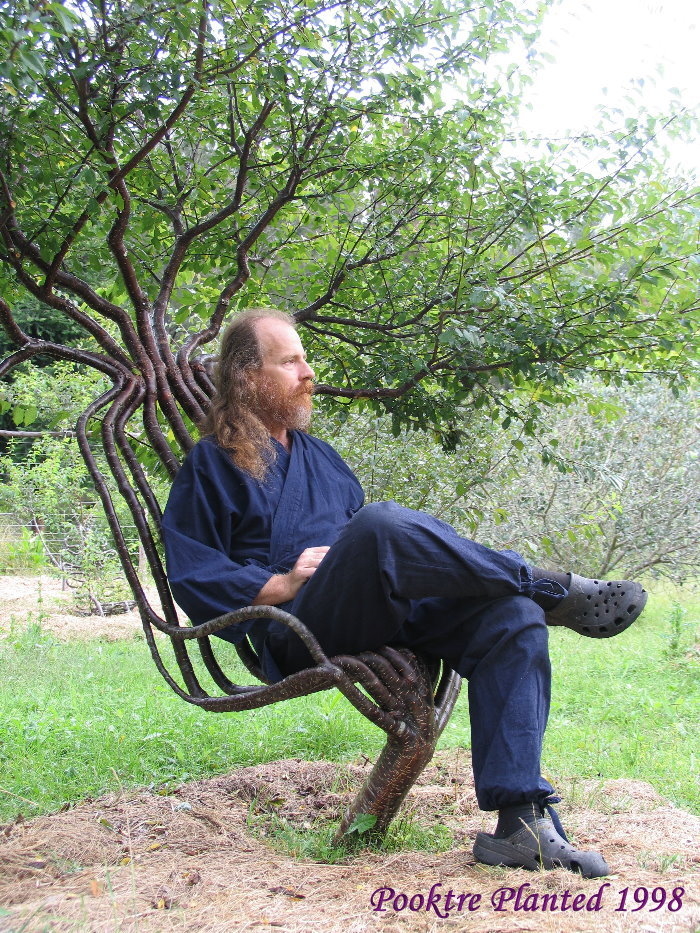I have this crazy dream of doing something similar to what these people are doing in the trailer for this documentary:
It's a documentary about a road trip across India in a three wheeled auto rickshaw.
My dream is to design and build my own three wheeled light electric vehicle and travel across America while documenting the journey.
My question is: Does anyone here know the laws about driving vehicles that have a top speed of 30 mph on interstate freeways or on their shoulders? I often see cyclists traveling the shoulders of interstate freeways. I wonder if it is possible with a light electric vehicle too. Anyone here know?
For anyone interested I've compiled a bunch of notes and inspiration for my dream three wheeled vehicle.
My Dream Three Wheeled Electric Vehicle
I haven't sketched the vehicle yet, but I have descriptions of it's various elements.
-
Three wheels: One steerable, drive wheel in the front and two smaller wheels in the rear aka delta configuration (inspired by New Map Solyto
Solyto link).

New Map Solyto
-
Two anti-rollover outrigger skids on either side of the front wheel that don't touch the road. If the vehicle ever begins to overturn the anti-rollover outrigger skids will keep the vehicle upright. I'm choosing skids instead of wheels because I want this vehicle to be considered a motorcycle for regulation and registration purposes.
-
AC to DC inverter: For plug in charging from the grid
-
Electricity storage: Ultracapacitors. Multiple advantages over batteries: Ultracapacitors can be fully charged and discharged whereas many batteries have been designed to only use a small percentage of their capacity to prolong their lifespan. Ultracapacitors can be charged and discharged an unlimited number of times whereas batteries can only be charged and discharged a few thousand or few hundred times. Ultracapacitors do not develop a memory whereas some batteries do develop a memory. Ultracapacitors can be charged in a few minutes whereas batteries that store the same amount of power would take hours. Ultracapacitors weigh a fraction of the weight of batteries that store the same amount of power. However, ultracapacitors do have some disadvantages. Ultracapacitors are currently very expensive as compared to batteries. Some technologies are still being developed to make ultracapacitors easier to use in this application.
-
Solar: At some time in the future I'd like to convert the vehicle to solar using high efficiency thin film solar cells. Considering spray-on solar cells (i.e. Spark Solar
Spray-On Solar Panels article at TreeHugger.com)
-
Motor: Electric motor mounted over the front chain driven wheel with freewheel and moped automatic transmission (inspired by New Map Solyto)

New Map Solyto front wheel and motor
-
Honeycomb wheels (inspired by Resilient Technologies and Wisconsin-Madison's Polymer Engineering Center
Airless Tire). The idea is to have tires that don't go flat. This also means no more added weight of a spare tire.

Airless Tire
-
Low rolling resistance tire treads. These will increase efficiency.
-
Drum brakes
-
Front coil shock absorber suspension (inspired by New Map Solyto)
-
Rear leaf suspension springs (inspired by New Map Solyto)
-
Regenerative braking: Considering rear generator/dynamo hub(s) (Shimano Dyno Hubs
Shimano Nexus Generator Hubs)

Shimano Nexus Generator Hub
-
Downhill regeneration: Considering rear generator/dynamo hub(s) (Shimano Dyno Hubs
Shimano Nexus Generator Hubs)
-
Aerodynamic enclosed body with removable rear wheel skirts: Considering a partial kammback or boat tail
-
Smooth under tray for improved aerodynamics
-
Smooth wheel ring hubcaps for improved aerodynamics. Like the following picture, but with a big hole in the hubcaps.

Smooth hubcaps
-
Aerodynamic deflectors forward of tires that also act as skids. Skids allow the wheels to climb onto and over obstacles (like speed bumps) at a lower angle.
-
Boat tails behind tires, under the car for improved aerodynamics
-
Body panels and doors made from soy bean based closed cell foam reinforced with strips of bamboo. This material will add to the vehicles safety. (inspired by Lon Ballard's Spira
SPIRA4U.COM)

Spira three wheeled foam vehicle
-
Bamboo frame: Bamboo is stronger, lighter and vastly less expensive than steel. Some frame sections will be fabricated with regular hollow bamboo. Frame sections that require more strength will be fabricated from solid iron bamboo. Iron bamboo is a species of bamboo that is solid all the way through and much stronger than hollow bamboo. Bamboo will be shaped while it grows using molds. Bamboo grows several inches a day so the parts can be grown in a relatively less amount of time than other plants. (inspired by Calfee bamboo bikes
CalfeeDesign, Pooktre shaping trees to grow into furniture
Pooktre Tree Shapers and Viking ships. Viking ship builders would find trees that were growing in the shapes they needed for making ship parts.
Hurstwic: Viking Ships)

Bamboo Bike

Shaped tree chair
-
Two seater, side by side seat configuration (inspired by New Map Solyto, Zap car
ZAP! Electric Vehicles). This seating configuration is sometimes called a "social configuration" in bicycling terms. I know tandem configuration would be more aerodynamic and more stable, but I want to share the experience and conversation with the other rider.

Zap! Xebra
-
Passenger seat is removable
-
Bamboo or rattan framed wicker seats
-
Fabric covered truck bed
-
Two removable back benches along the walls
-
Handlebar steering and throttle (inspired by Auto Rickshaws
Auto rickshaw - Wikipedia, the free encyclopedia, RTM Tango
RTM TANGO). Handlebars with a twist throttle weigh less than a steering wheel and accelerator pedal.

An Auto Rickshaw

RTM Tango
-
Foot brake pedal instead of hand brakes (inspired by RTM Tango). I am more accustomed to using my foot for braking than my fingers. If I'm ever in a situation where I need to brake instantly, I would rely more on my car driving skills than motorcycle/bicycling skills.

RTM Tango interior
-
All LED lighting
I'd love to hear any comments you have on this adventure.